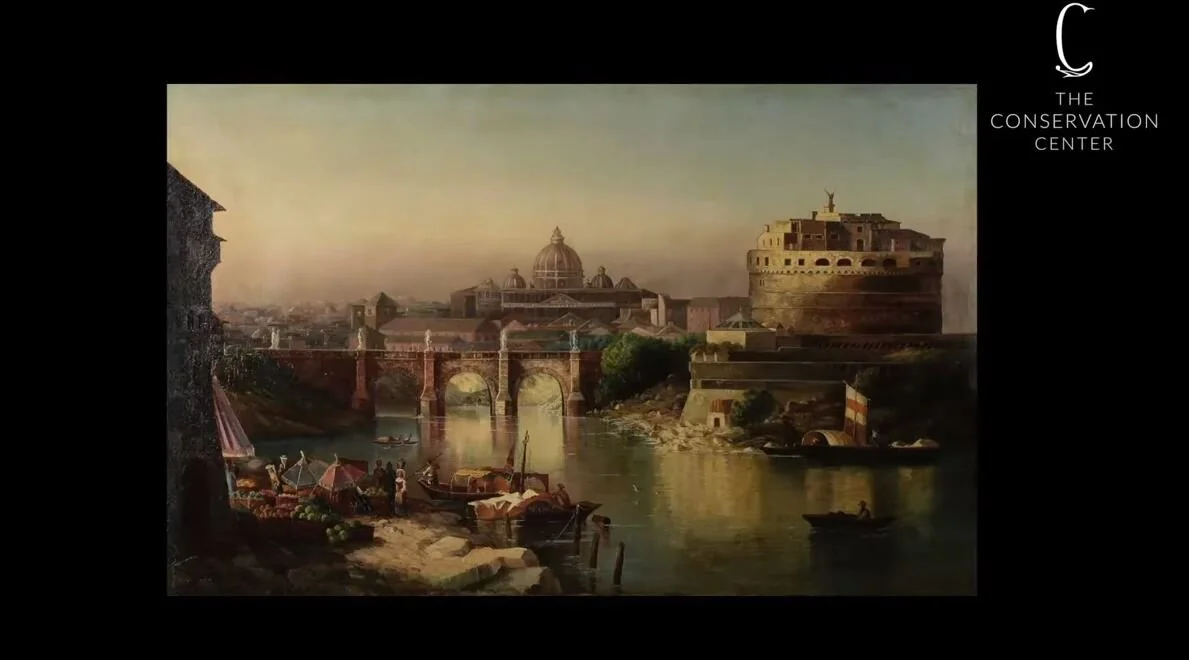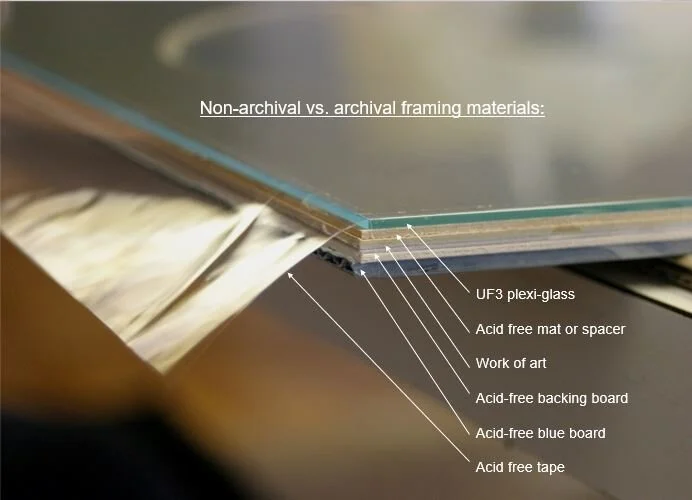Even though we’re in the business of conservation, we don’t interact with wildlife daily – we usually leave the other kind of conservation to scientists and naturalists. When Elmer the giraffe needed treatment in our laboratories, we knew we were in for a treat! Standing as tall as a person, this playful sculpture was a welcome guest in the warehouse where he first arrived.
Vatican City Transformation
A Maxwell Street Polish, Keeping Chicago History Alive
We were honored when the Maxwell Street Foundation brought in a treasure from a bygone era: a hand-painted pressboard sign attributed to Gus Korn, an artist who hand-painted the iconic Vienna Beef signs from the 1950s to mid-1980s in a shed behind the factory.
Terracotta Warriors Ride Again
Horses have a special place in Chinese history. They were considered so important that during the Shang and Zhou dynasties, they were buried alive in the tombs of their noble owners. You have likely heard of the Qin Shi Huang Mausoleum, where Emporer Qin Shi Huang went so far as to build an entire terracotta army of life-size war horses to protect him in the afterlife. When a set of terracotta horses and riders arrived at The Center, while nowhere as large as those in the Qin Shi Huang Mausoleum, we knew we were working with something special.
Preserving a Family Recipe Book
Here at The Center, we deal with a wide variety of pieces: museum acquisitions, historical artifacts, contemporary collections – but sometimes the most special projects are the ones focused on family heirlooms. A recipe book we recently had the honor of treating is the perfect example: deeply sentimental, an homage to past generations’ day-to-day lives, and in need of preservation for future generations’ continued enjoyment. This book came to us from a family eager to explore its origins, once belonging to a (perhaps great) grandmother from England.
Buddhist Temple Conservation: Part 1
Common Mistakes: Mat Burn
A Glimpse into Marquetry
Sliver-thin, delicately cut, and masterfully assembled into breathtaking images and patterns; one does not need to know much about marquetry to understand the skill it requires. A process dating back thousands of years, marquetry is the beautiful result of years of training, perfection, and artisanship.
A Special Letter from the Founder of Newcity
More Than a Cardboard Box: Treating and Framing a Free Humanity Work
Thoughts on Varnish from a Conservator
Five Favorite Tools from our Furniture Laboratory
"Portrait of a Woman"
Lincoln’s Loveseat: Restoring a Historical “Courting Couch”
Love is in the air with Valentine’s Day this month, and we couldn’t think of a more suitable time to finish restoring Abraham and Mary Todd Lincoln’s “Courting Couch” for The Springfield Art Association’s collection in Springfield, Illinois. Romantic sparks flew between the 16th U.S. president and his future First Lady, Mary Todd, right on this horsehair-upholstered sofa built in the 1830s. The Conservation Center revived an 180-year old loveseat and along the process, uncovered a lost piece of history hidden in the arm cavity.
Through The Eyes of Lincoln: A Very Special Pair of Opera Glasses
Located in the Land of Lincoln, The Conservation Center sees its fair share of memorabilia connected to the 16th President of the United States. Among various Lincoln memorabilia, in 2014 we had the honor of restoring the courting couch, the sofa on which a young Abraham Lincoln and Mary Todd actually sat throughout their courtship in the home of Mary’s sister, Elizabeth. So when a Lincoln relic causes our conservators to stop in awe, rest assured it is a truly special item.
Six Degrees of Abraham Lincoln: A Historic Mirror Stored at The Conservation Center
While The Conservation Center is well known for its fine art conservation capabilities, additional expert services are offered as well. One of our clients, Martha Manning, has become quite familiar with the work that The Center provides, having many of her cherished art and heirloom pieces treated here over the years. As she explains, "I collect objects. I love them whether they are simple or ornate, I love the their accompanying stories and I love preserving them." But when Martha moved from her old home with sky-high ceilings into a 14th floor apartment in a mid-rise building, she was struck with a conundrum. A gigantic gilt mirror that had been in the family for generations would no longer fit in her home, and with such a rich backstory, she knew she couldn't give it up just yet.
A Note on Abraham Lincoln from Mark B. Pohlad, Ph.D
Abraham Lincoln (1809-1865) is considered one of this country’s greatest presidents. He has been called America’s first citizen and Illinois’ favorite son. Of course, Lincoln’s words and actions — the Gettysburg Address and the Emancipation Proclamation, for example — are surely history-defining. But the objects associated with him are also crucially important for understanding his world, for experiencing his time, and for recovering his very person.
The Abraham Lincoln Presidential Library and Museum
The Center is proud to have treated objects from the Abraham Lincoln Presidential Library and Museum, which is celebrating its 15th anniversary! For more stories about Lincoln, you can explore their website or follow them on Facebook, Twitter or Instagram. Once the museum reopens, they’ll be able to welcome their five millionth visitor!
Kerry James Marshall's "Ipso Facto"
In 2016, The Center had the pleasure of working on a personal piece for Kerry James Marshall titled Cleanliness Is Next to Godliness and we were very honored when the artist gave us the opportunity to work on another piece from his personal collection. “Ipso Facto” is a painting executed on two plywood panels joined together with batons and screws. The diptych is primed and painted with what appears to be moderately applied acrylic. Both panels depict a figure’s rear. The left panel is painted in white, with various colors playfully peeking through the brush strokes, and the other is painted in black surrounded by small white flowers with intimate red and green details. The piece is unvarnished and while unsigned, the painting is characteristic of Marshall’s work.





















